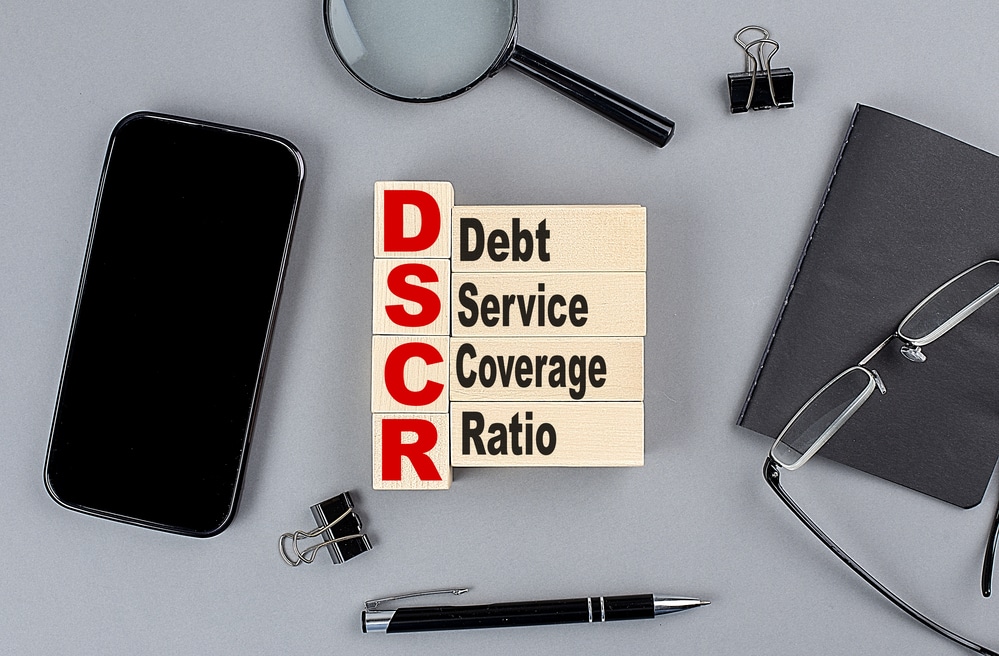When it comes to loans, we often think about banks, paperwork, and lots of fine print, right? Well, today we’re diving into the world of a specific type of loan called a DSCR loan.
The DSCR loan agreement is a written document that outlines everything you need to know about your loan:
- How much you’re borrowing
- The interest rate
- When you need to repay it
- What happens if you don’t
Now, that might sound like every other loan agreement out there, but the DSCR loan agreement has some unique elements that we will unravel today.
Why is this important, you might ask? Well, understanding your DSCR loan agreement is just like reading the manual before assembling a new piece of furniture. You don’t want to end up with extra pieces (or payments!) that you didn’t expect, right?
By thoroughly understanding the terms of your loan, you can avoid any nasty surprises down the line and ensure you’re making the best financial decision for your situation.
What is a DSCR Loan?
DSCR, or Debt Service Coverage Ratio, is a benchmark used by lenders to assess a borrower’s ability to repay a loan. So, a DSCR loan is a type of loan where the lender pays close attention to this ratio.
It looks at how much cash a business (or sometimes an individual) generates relative to its debt obligations, including current debt and the proposed new loan.
DSCR loans have been around for a while. They first made a significant impact in the world of commercial lending, where businesses needed to prove they had enough cash flow to cover their debt payments.
But over time, DSCR loans have also become popular in other areas like real estate investing, where individuals or companies may want to borrow money based on rental income from a property, for example.
How DSCR Loans Work
So how does a DSCR loan work in the real world?
Let’s say you own a business, and you want to take out a loan. The lender will calculate your DSCR by dividing your business’s net operating income by your total debt service (that’s all the money you’re paying out for existing debts and the proposed new loan).
If your DSCR is less than 1, it means your business doesn’t generate enough income to cover its debts. But if it’s above 1, it’s good news! Your business generates enough income to cover its debts, making you a more attractive borrower.
But remember, each lender may have different DSCR requirements, so it’s always worth shopping around and seeing what’s the best fit for you. After all, loans are not one-size-fits-all!
Key Terms and Conditions to Consider in a DSCR Loan Agreement
Now that you know what a DSCR loan is, let’s look at some of the key terms and conditions to consider when evaluating your agreement:
-
 Interest Rate – The interest rate on a DSCR loan will be based on your business’s risk profile, so it’s important to be aware of this up front. It may also be subject to change over the term of the loan, so be sure to check if this is the case.
Interest Rate – The interest rate on a DSCR loan will be based on your business’s risk profile, so it’s important to be aware of this up front. It may also be subject to change over the term of the loan, so be sure to check if this is the case. - Collateral – Many DSCR loans require some form of collateral, such as a lien on equipment or real estate. Make sure you understand what is being used as security and how it works in case you default on your loan payments.
- Prepayment Penalty – Some DSCR loan agreements include a prepayment penalty, which is a fee charged if you pay your loan off early. Make sure the agreement is clear on how this works and consider negotiating to have it removed.
- Repayment Plan – The repayment plan in a DSCR loan agreement will usually be based on fixed or variable payments over a set period of time. Make sure you understand the details and are comfortable with what is outlined in the agreement.
- Default Provisions – Read through the default provisions carefully, as it outlines what happens if you fail to make your payments on time or breach other terms.ConclusionWhen reviewing a DSCR loan agreement, it’s important to ensure that all
The Repayment Structure of a Dscr Loan Agreement
This will tell you how much you’ll be paying each month and when these payments are due. It’s another key factor to consider because it can have a big impact on your budget and cash flow.
Various Repayment Structures in DSCR Loan Agreements
DSCR loan agreements can come with different repayment structures. The most common ones you’ll come across are:
- Amortized payments: This is where each payment includes both principal (the original loan amount) and interest. Over time, you’re gradually paying down the principal amount of the loan.
- Interest-only payments: In this case, your regular payments only cover the interest that’s accruing on the loan. The principal stays the same, and you’ll have to pay it off in a lump sum at the end of the loan term.
- Balloon payments: With balloon payment loans, you’ll make small payments for a certain period, and then a large “balloon” payment at the end to pay off the remaining loan balance.
Pros and Cons of Each Repayment Structure
Each of these repayment structures has its pros and cons:
- Amortized payments: The big pro here is that you’re gradually reducing your debt over time. But the con is that your initial payments might be higher than with other structures because you’re paying off both principal and interest.
- Interest-only payments: The advantage is that your regular payments are lower because you’re only covering interest. However, you’ll need to be prepared for that lump sum payment at the end, which could be a con if you don’t plan for it.
- Balloon payments: The pro of a balloon payment structure is the lower initial payments, but the big con is the large final payment. If you don’t have the funds ready, it could cause financial stress.
Determining Which Repayment Structure Is Suitable for Your Needs
So how do you decide which repayment structure is right for you?
It all comes down to your financial situation, your future income prospects, and your comfort level with risk.
If you’re confident you’ll have a lump sum available later, an interest-only or balloon payment structure might work. But if you prefer stability and gradual debt reduction, amortized payments might be the way to go.
Remember, a DSCR loan is a commitment, and choosing the right repayment structure can make it much easier to handle. It’s always a good idea to chat with a financial advisor or a trusted lender to make sure you’re making the best decision for your situation.
Evaluating Interest Rates and Fees in a DSCR Loan Agreement
Interest rates, as you may know, are a key part of any loan, including DSCR loans. The rate can be fixed, meaning it stays the same over the life of the loan, or variable, meaning it can change based on market conditions.
Usually, the interest rate on a DSCR loan will depend on several factors, including your DSCR, the loan term, and the overall lending environment. But interest isn’t the only cost associated with DSCR loans.
There are also fees to consider. For instance, you may come across origination fees, which are charged for processing the loan, or appraisal fees, charged for estimating the value of any property you’re using as collateral.
There could also be prepayment fees if you pay off your loan early, or late fees if you miss a payment.
So how do you compare rates and fees among different DSCR loan agreements?
The key is to look at the APR, or annual percentage rate. The APR includes both the interest rate and the fees, giving you a more complete picture of the loan’s cost. Comparing APRs among different loan agreements can help you identify the most cost-effective option.
But keep in mind, the cheapest option isn’t always the best.
You also need to consider other aspects of the loan, like the repayment structure and the loan term, to make sure it fits your needs. And of course, always make sure to read the fine print to understand what you’re signing up for!
Assessing  Requirements in a DSCR Loan Agreement
Requirements in a DSCR Loan Agreement
In loan lingo, collateral is something of value that you pledge to the lender to secure the loan. It’s kind of like a safety net for the lender – if you can’t repay the loan, the lender can seize the collateral to recover their money.
In a DSCR loan, the collateral is often the property or business that’s generating the income used to calculate your DSCR.
Different types of collateral can affect your loan agreement in various ways. If you’re using real estate as collateral, for example, the lender will typically want an appraisal to determine the property’s value.
The amount you can borrow may be capped at a certain percentage of that value, a figure known as the loan-to-value ratio.
If you’re using a business as collateral, the lender may want to see your financial statements or even have a say in certain business decisions to protect their investment.
Tips on Managing Collateral Requirements
As for tips on managing collateral requirements, the most important thing is to understand the risks.
If you’re pledging your home or your business as collateral, remember that you could lose them if you can’t repay the loan. So make sure your projected income is reliable and sufficient to cover your loan payments.
Also, it’s worth getting an independent appraisal of any property you’re using as collateral. That way, you can be confident that you’re not borrowing more than the property is worth.
Reviewing Prepayment and Default Provisions
Prepayment provisions are rules about what happens if you decide to pay off your loan early. You might think, “Hey, paying off a loan early is great, right?” And yes, it can be!
But some lenders include prepayment penalties in their loan agreements, which means you could be charged extra for paying off your loan ahead of schedule.
On the other hand, default provisions outline what happens if you fail to meet the terms of the loan, such as missing payments. This could involve additional fees, an increase in your interest rate, or even immediate repayment of the full loan balance.
How These Provisions Can Affect Your DSCR Loan Agreement
These provisions can significantly affect your DSCR loan agreement. Prepayment penalties could make it more expensive to pay off your loan early, which could be a drawback if you come into some extra money and want to reduce your debt.
Default provisions could make a difficult situation even worse if you’re having trouble making your loan payments.
In a worst-case scenario, defaulting on your loan could lead to foreclosure or bankruptcy, and it could severely damage your credit score.
Strategies to Navigate Prepayment and Default Provisions
So how can you navigate these tricky provisions? Here are a few strategies:
- Read carefully: Make sure you fully understand the prepayment and default provisions before you sign the loan agreement. If anything is unclear, ask your lender to explain it to you.
- Plan ahead: If there’s a chance you might want to pay off your loan early, try to negotiate a loan agreement without prepayment penalties. If this isn’t possible, make sure you’re comfortable with the potential extra cost.
- Stay informed: Keep track of your loan payments and ensure you’re meeting all the terms of your loan agreement. If you’re having trouble making payments, contact your lender as soon as possible. They may be willing to work with you to modify the loan terms and avoid default.
Seeking Legal Assistance in Reviewing a DSCR Loan Agreement
Legal advice can play a pivotal role in understanding a DSCR loan agreement.
Lawyers specializing in finance or real estate can help you understand the fine print of your loan agreement, explain your rights and obligations, and even negotiate terms on your behalf.
They’re like your tour guide in the sometimes complex world of loan agreements, making sure you don’t miss any important details and helping you navigate any potential pitfalls.
So how do you find the right legal help? Here are a few tips:
- Research: Start by looking online for lawyers in your area who specialize in finance or real estate. Check out their websites to see what kind of services they offer and what their clients say about them.
- Consultations: Many lawyers offer free or low-cost consultations. This can be a great way to meet the lawyer, ask questions, and get a sense of whether they’re the right fit for you.
- Cost: Legal advice can be expensive, but it’s often worth the cost for the peace of mind and protection it provides. Ask about the lawyer’s fees upfront to make sure they fit within your budget.
Wrapping It Up
We’ve looked at the ins and outs of DSCR loan agreements, starting with a basic understanding of what a DSCR loan is. We’ve then delved into key terms and conditions, repayment structures, interest rates and fees, collateral requirements, and prepayment and default provisions.
The main takeaway? It’s crucial to understand all the details of your DSCR loan agreement before you sign on the dotted line. This isn’t just a bunch of paperwork – it’s a legal contract that can have a significant impact on your financial future.
So take your time, do your research, ask questions, and consider seeking legal advice. Remember, when it comes to DSCR loans, knowledge is power. With a solid understanding of your loan agreement, you’ll be in a strong position to make the best borrowing decision for your needs.
And that’s a wrap! We hope you’ve found this post helpful and informative. Remember, navigating the world of DSCR loans can seem challenging, but with the right information and resources, you’ve got this! Happy borrowing, and here’s to your financial success!
Remember, navigating the world of DSCR loans can seem challenging, but with the help of Sprint Funding, everything becomes easier. We provide a reliable platform to help you make the right decisions when searching for DSCR financing options. Contact us today and start your journey towards financial freedom.





